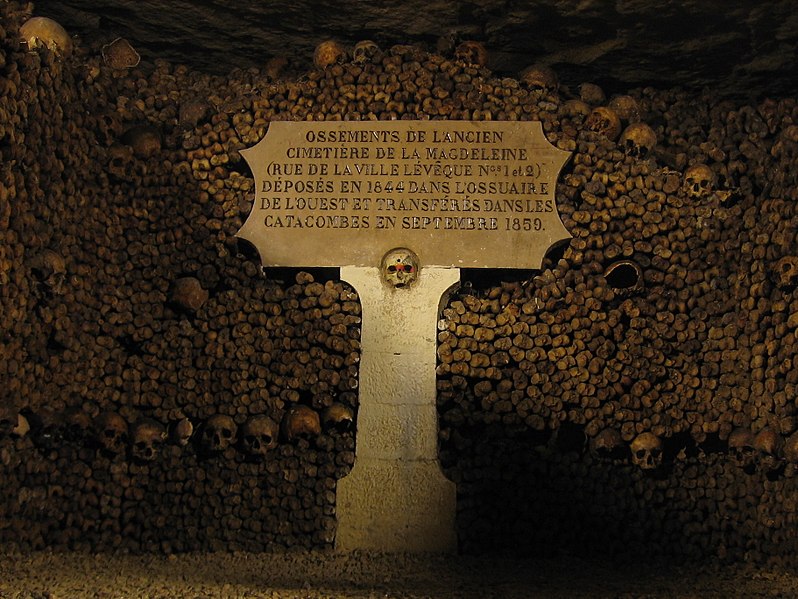A Prehistory of n-Categorical Physics II
Posted by John Baez
My previous attempt to finish this paper did not succeed:
- John Baez and Aaron Lauda, A prehistory of -categorical physics — 2nd draft version or arXiv version.
I got blindsided by final exams, my arrival in Paris, my work with Paul-André Melliès here, and the need to work on other papers.
But I’m back at it again… and today, tour of the Catacombs instilled me with a new sense of urgency.
I hadn’t really understood how many people were down there until today. Someone said 6 million, but the impressive part is not the number, but actually hiking for almost an hour down dim-lit corridors lined with bones, skulls, and plaques in French and Latin. I have little sense of how much of the whole labyrinth we saw — many passageways were blocked off, probably to keep people from getting lost. Some regions were wet underfoot, dripping from the ceiling. A few large chambers had been formed by cave-ins.
The moral: eat, drink, and publish, for tomorrow we die!
In the second draft version of the paper you’ll see a few new things:
- A longer survey of various definitions of -category in the section on Grothendieck’s 1983 letter called Pursuing Stacks. I also added some elementary remarks about the problem of comparing definitions.
- A much longer explanation of Freyd and Yetter’s 1986 paper on categories of tangles, leading up to a description of Shum’s theorem. I still need to explain how this led Jim Dolan and me to ponder ‘braided monoidal categories with duals’.
- More about quantum groups in the section on Reshetikhin and Turaev’s 1989 paper on tangle invariants from quantum groups.
- A brief sketch of loop quantum gravity and spin foams in the section on Rovelli and Smolin’s 1990 paper introducing loop quantum gravity. This is very short but I’m afraid that’s how it will have to stay.
- A section on Kashiwara and Lusztig’s work on crystal bases starting around 1990. I need to polish this a bit more.
There’s still a lot to be done — I’ll get going right now!



Re: A Prehistory of n-Categorical Physics II
Typo – Frank Wilczek’s name is spelled wrong on page 50.
Kevin